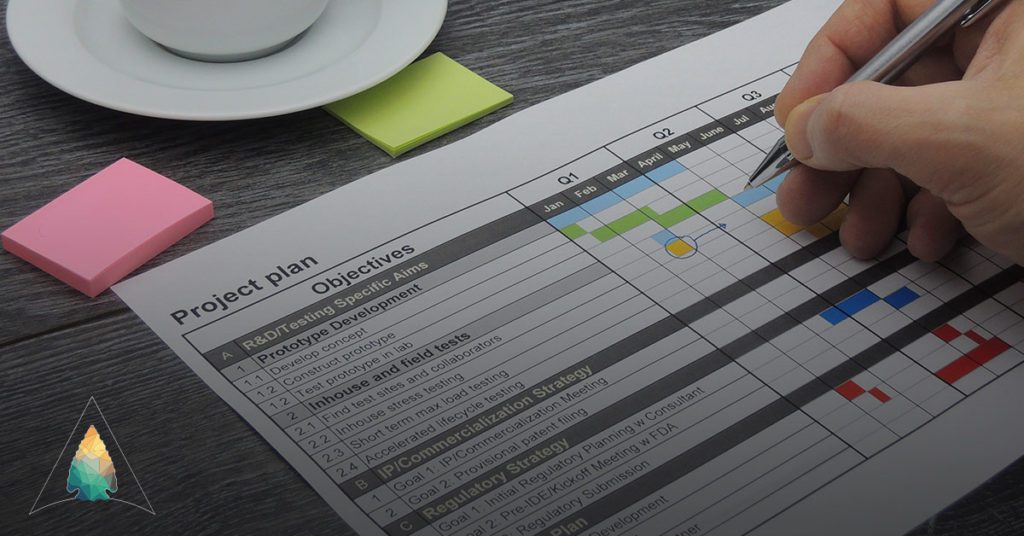
Project Control or Project Chaos: You Decide
I heard an interesting question last year -What is the most profitable type of company in the US? The answer was “a well-run Oil and Gas company.”
What caught my attention was the follow-up question: What is the second-most profitable type of company in the US? Answer – a poorly run Oil and Gas (O&G) company. These questions and the resulting laughter made me keenly aware of how some companies view project controls – potential overhead that may not be needed if we are going to be profitable nonetheless.
Unfortunately, the O&G industry has slowly slipped into a widely acceptable culture of tight schedules and loose estimates, even though everyone knows it is quite impossible to achieve the outcome within the documented cost/time frame. This leaves our sponsors, stakeholders, and customers asking (after the deliverable date has passed with no deliverable) “How much longer will this take and how much more will it cost?” Why settle for delayed revenue, increased costs, late project completion and lower margins when you can alleviate them all by simply inserting some basic control practices and procedures in place and continuing to grow them as you and your team learns and embraces the new processes.
I believe the times are gone when we had the luxury of estimating costs for the delivery of a O&G project at $100 million and the exact costs turn out to be closer to $200 million. Good project control practices can increase the certainty of what a project will cost (before you even write a check), when a project will be complete (long before you hear that whooshing sound as the deadline flies by) and ultimately allow you to more accurately forecast revenue.
Some of the basic tools to implement first: schedules, estimating and documentation. Then you are on to project controls.
Project Schedule
A proper schedule (a key component to Project Controls) is going to “tell a story” about your project. Knowing what is going on, what has gone on and who has it going on is essential to running a successful project. In this manner, a schedule is going to allow for greater visibility and accuracy on a project. Starting with a WBS (work breakdown structure), you capture the scope of the project and keep anything from falling through the cracks. Once you have that, sequencing, estimating and resourcing the tasks allow you to better forecast completion. Knowing the project’s critical path (which is made tremendously easier through a scheduling tool like MS Project or Primavera), will let the project manager know what tasks will either cause the project’s end date to slip or what tasks need the most attention to keep the project on track.
Project Estimates
There needs to be more granularity in the estimating process – a deeper understanding of what lies behind the figures in our estimates, how our estimates were obtained. By doing so, when (not if) project parameters change, then cost estimates correlate and can be managed appropriately.
Documentation
Something as simple as implementing a CHAIRD log goes a long way in helping control your projects. It houses CHanges that are made to the project, potential Action items needing attention, Issues that have happened, Risks you should be on the lookout for (along with corrective actions should they happen) as well as Decisions that were made to either get you out of your current situation or that got you into your current jam. This completed document also helps feed after action reviews for project quality improvement as well as lessons learned for future projects.
Implementing Project Controls
A schedule is only as good as the data that is fed into it. A good project controls analyst (PCA) is going to assist with establishing realistic estimates, run meaningful reports out of the data, and help with overall precision on the project. A PCA can work with vendors and other third parties to obtain updates on the project and feed that into the schedule for (nearly) real-time status.
Of course, these are all great ideas but can be daunting to try to implement them all at once from ground zero. If you’re looking to increase the effectiveness of your projects while improving your overall project lifecycle experience, give us a call. We have a myriad of ideas, experience and training that can empower you to improve and enhance your company’s project performance.
Thanks for reading! Connect with us on Facebook or LinkedIn!
Arrowhead Consulting – Aimed at Your Success!
